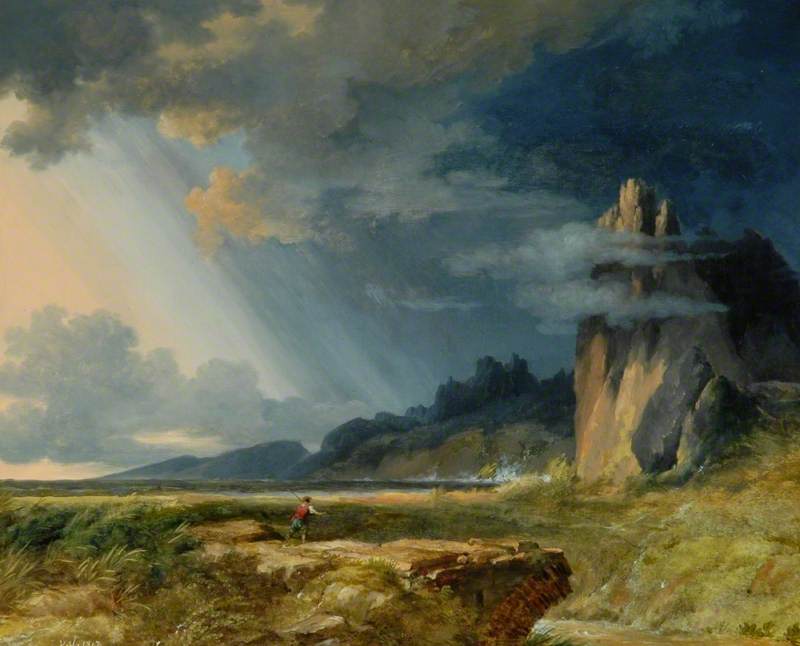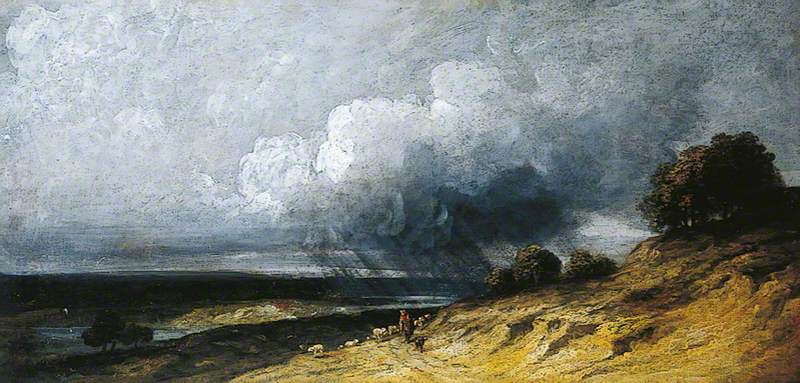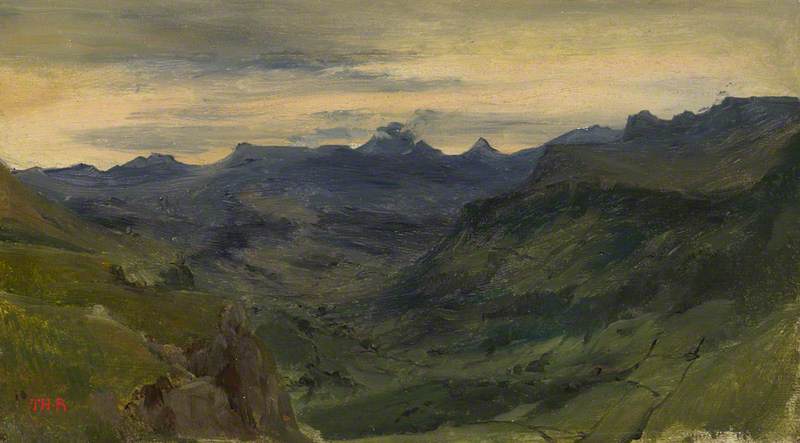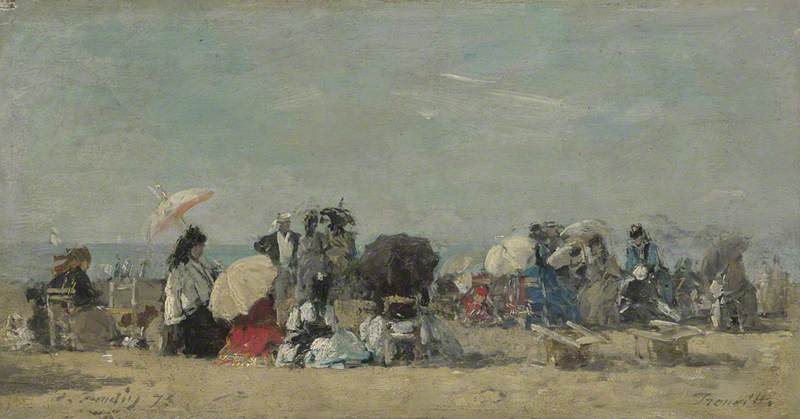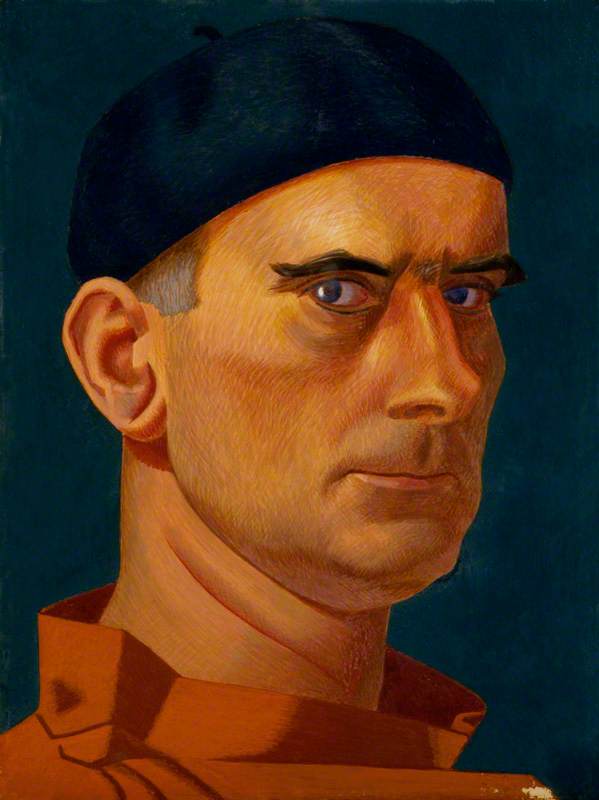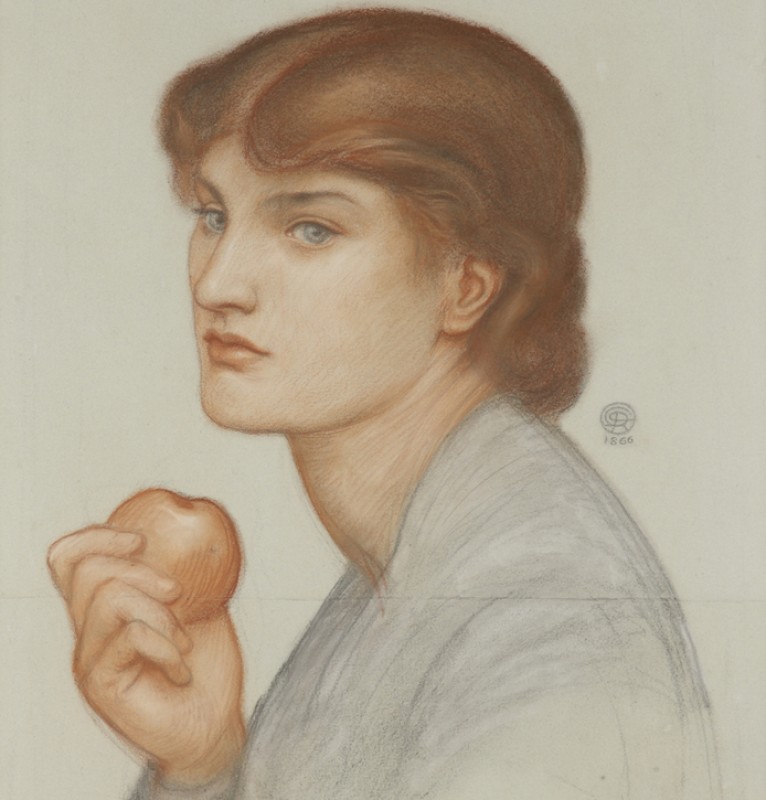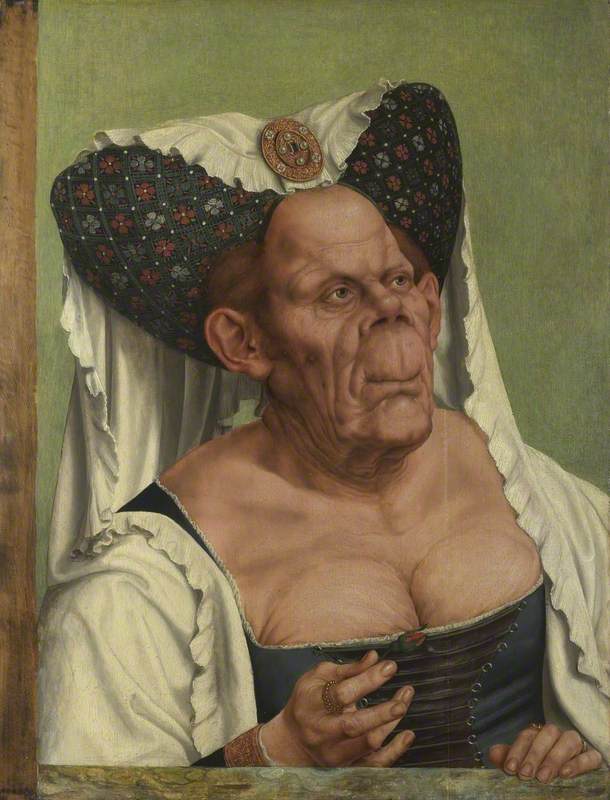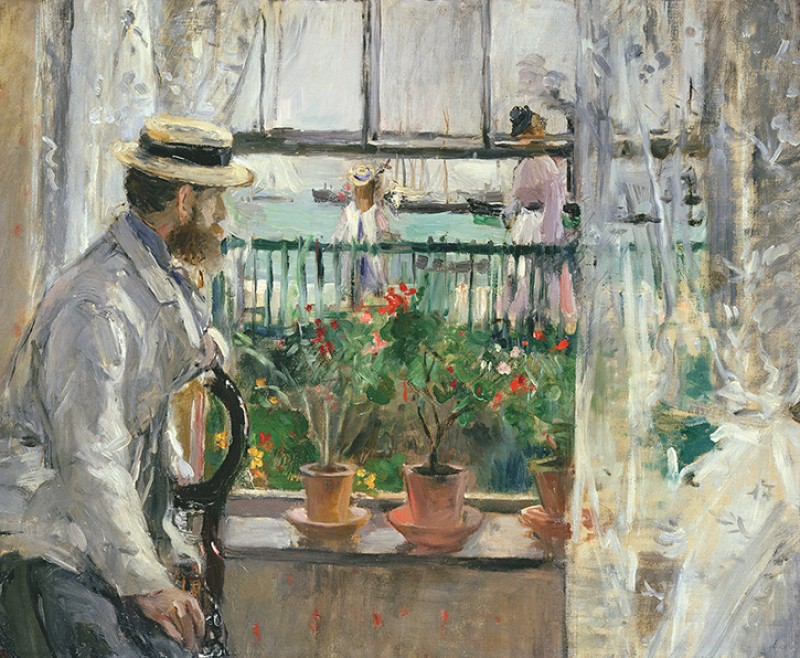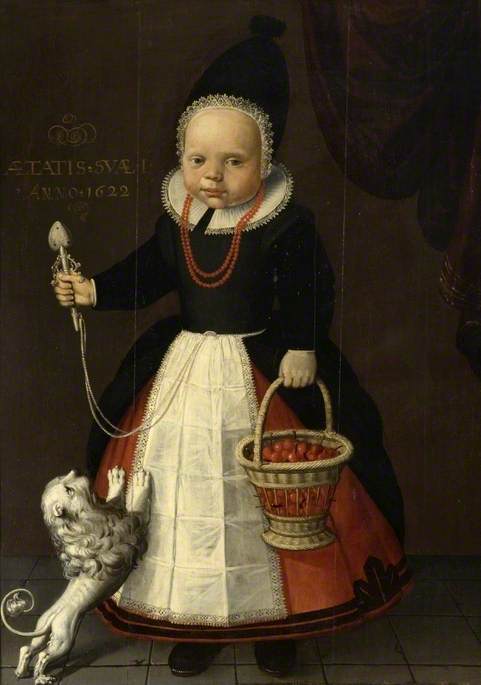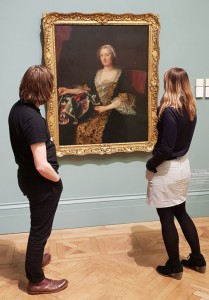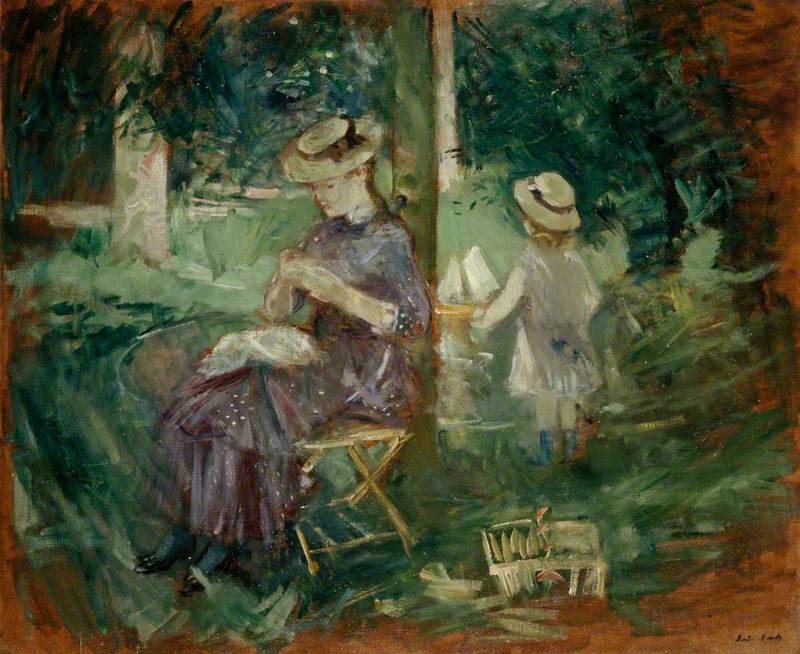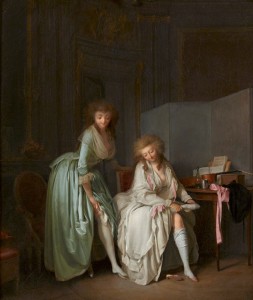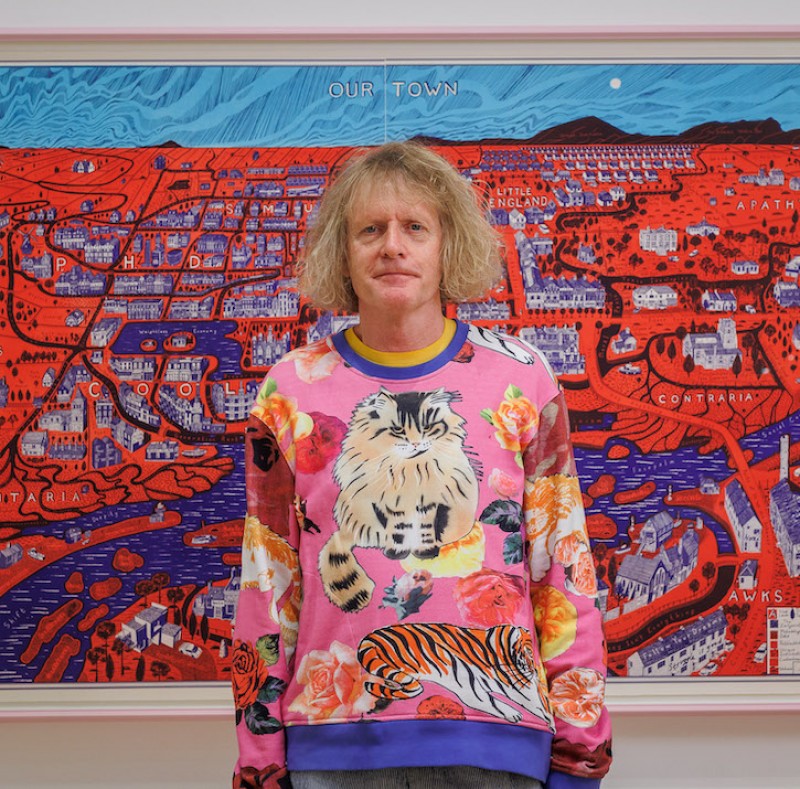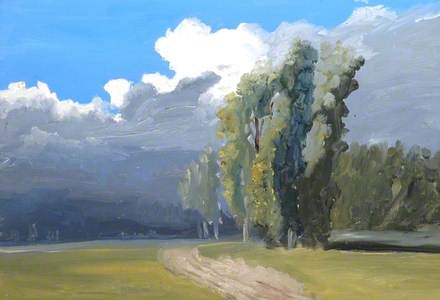A golden opportunity to research the fine art collection at The Cooper Gallery unearthed the often-overlooked pioneers and innovators of landscape painting in nineteenth-century France. In our 2023 exhibition, 'Light and Soul: Early Impressions of the French Landscape', these artists are gathered again, their achievements recalled and their journeys and connections explored.
Bas Breau, par le carrefour de Clair-Bois en la forêt de Fontainebleau, France
1864
Narcisse Virgile Diaz de la Peña (1807–1876) 
The research project was funded and enabled by the Headley Fellowship with Art Fund and began in late 2020 with an examination of the 80 French artworks at The Cooper Gallery. The aim was to carry out in-depth study on a selected group and those who emerged most strongly were the landscape painters working in the Forest of Fontainebleau and along the coastal areas of Normandy in the nineteenth century.
The resulting exhibition explores the different paths each artist took to pursue their vision and the impact they had on peers, students and followers. Some were leaders, some were teachers and many had a significant influence on today's most famous painters including Claude Monet, Berthe Morisot and Camille Pissarro.
A Wagon in the Plains of Artois
1871
Jean-Baptiste-Camille Corot (1796–1875) 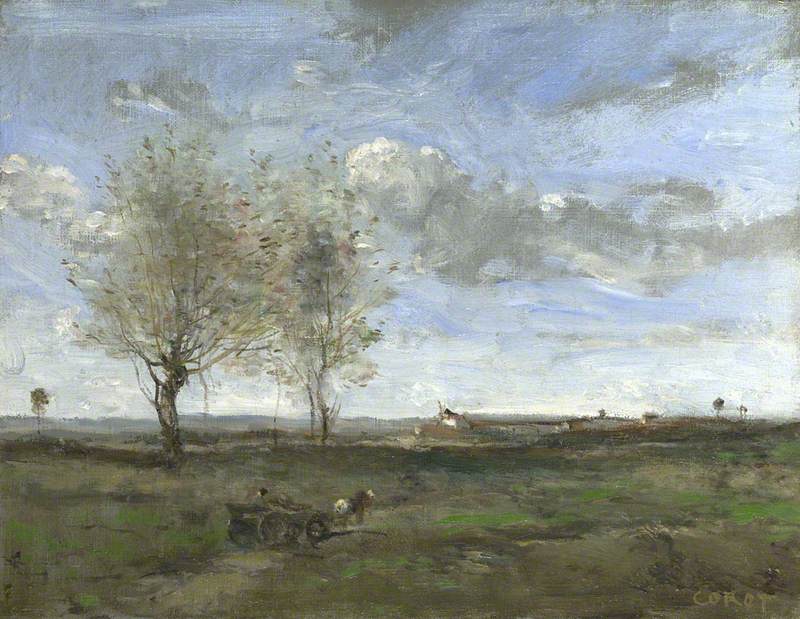
In the first half of the nineteenth century, the world of painting in France was firmly controlled by the Académie des Beaux-Arts in Paris and the strict rules taught to students at the École des Beaux-Arts. This education emphasised the importance of ancient Greece and Rome and the Renaissance of the fifteenth and sixteenth centuries. For landscape artists, a period spent in Italy, particularly in Rome and its surrounding countryside, was vital for creating paintings with a historical theme in a classical style.
Georges Michel was one artist who believed there was no need to look further than Paris and its surrounding countryside to be inspired by nature. He followed the tradition of creating studies in the open air but rejected historical landscape themes.
Michel worked at the Louvre for a time, restoring seventeenth-century Dutch and Flemish paintings. This inspired him and influenced his style as is shown in his use of light and shade and powerful portrayals of open skies and expansive fields.
Drawing and painting in the open air was an established practice for landscape artists. To develop an understanding of the natural world, artists spent endless days sketching outdoors and absorbing their surroundings. This was important for building knowledge and technical skills, but the immersion in the landscape also moved many to feel a deep, emotional connection with nature. The artists in this exhibition were part of a generation who started to portray more realistic views of their environment, rather than idealised versions. They also focused more on the landscapes of France, rather than those of Italy. In technique, their looser brushstrokes captured movements and sensations, and began to form impressions.
Théodore Rousseau was a great innovator who investigated colour and texture and explored wild landscapes across France. He was famously committed to creating sketches and oil studies directly from nature. Rousseau also spent endless hours completing his paintings in the studio and was keen for official recognition at the Salon. His work was accepted over the years but was also frequently rejected for its realistic subject matter or lack of finish.
To the southeast of Paris lies the vast Forest of Fontainebleau, a landscape of dense woodland, imposing boulders, great plateaus and a sandy plain. Between the 1820s and the 1870s, painters from Corot and Rousseau to Monet and Renoir drew inspiration from these varied elements. The forest was a haven for observing nature and its many different atmospheres. The village of Barbizon on the northwest edge of the forest became a gathering place for artists who were later known as the 'Barbizon School'.
Chemin à travers les rochers (Path through the rocks)
1845–1850, drawing by Theodore Rousseau (1812–1867) 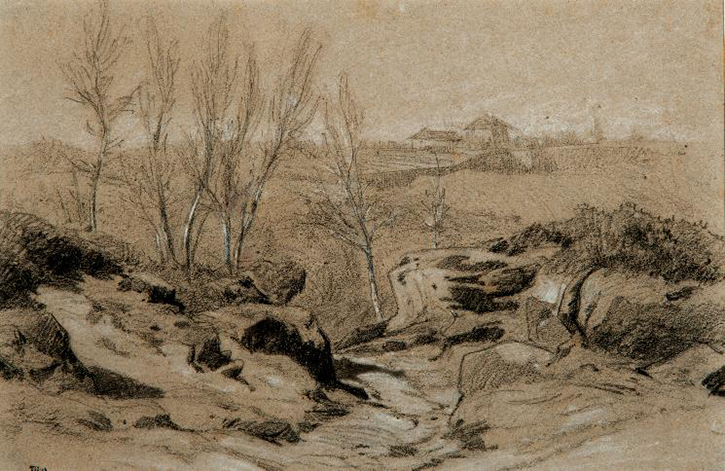
Around the mid-nineteenth century, a growing number of artists began to focus on more realistic views of people and animals in rural landscapes. Rather than showing noble or mythical heroes, artists such as Constant Troyon, Rosa Bonheur and Jean-François Millet turned to everyday rural life. Cattle, sheep and labourers became their subjects, drawn and painted in an impressively naturalistic manner.
Vache à l’abreuvoir (Cow at a Watering Place)
c.1870, drawing by Jean-François Millet (1814–1875) 
The effects of natural light became an important subject for contemplation and expression in landscape painting. This included studying the impact of weather, seasons and time of day and how the light varied in different parts of the country. Many artists had a handful of favourite views and regions across France and in some cases, small colonies of artists gathered who were drawn to a certain place. The Normandy coast became a popular destination with its combination of wide-open beaches and picturesque towns and skies.
Eugène Isabey's career was long and illustrious and he was widely regarded as the best marine painter of his time. He excelled in coastal views and painted both dramatic, stormy seas and lighter, more serene views. The studio he ran in Paris was very popular and he counted Eugène Boudin and Johan Barthold Jongkind amongst his pupils.
Boudin was a self-taught and pioneering artist, well-known for mentoring his young friend Claude Monet. Boudin was born in Honfleur into a family of modest means and spent many years developing his paintings of shipping and harbours. In the summer of 1862, he painted his first beach scenes on the advice and encouragement of Isabey. These fresh and inspired observations of the elegant people visiting Trouville and Deauville brought him great success. Whether studying a port or a beach, Boudin's focus was on the changing light and weather and how they shaped movement and colour.
Joséphine Bowes was a talented artist as well as a collector. She enjoyed creating oil studies directly from nature and took sketching trips into the Forest of Fontainebleau. Study of Poplars is a small study painted in the open air which shows the artist's use of an intensely bright blue for the sky, but also thick clouds in shades of darkening grey. The paint is thickly and flatly applied, possibly with a palette knife. The solid areas of single colours placed next to each other also hint at the potential influence of early Impressionist painters on her work.
The natural world, captured in landscape pictures on a smaller scale, was an appealing subject in the late nineteenth century, particularly for a certain type of buyer new to the world of art collecting. On both sides of the Channel, in other European countries and in the USA, industrialisation was creating noisy, dirty cities with expanding populations. The business owners and manufacturers who were busily making their fortunes were forming a new class with money to spend and social aspirations to meet. This is one of the reasons why we find works such as those in 'Light and Soul' in so many public collections in the UK. The research project and exhibition have been a wonderful opportunity to bring them out of their stores and back into the spotlight.
The artworks from The Cooper Gallery collection in the exhibition are accompanied by a generous number of paintings on loan from Sheffield Museums Trust, Leeds Museums and Galleries, York Museums Trust (York Art Gallery), The Bowes Museum and The National Gallery, London.
'Light and Soul: Early Impressions of The French Landscape' at The Cooper Gallery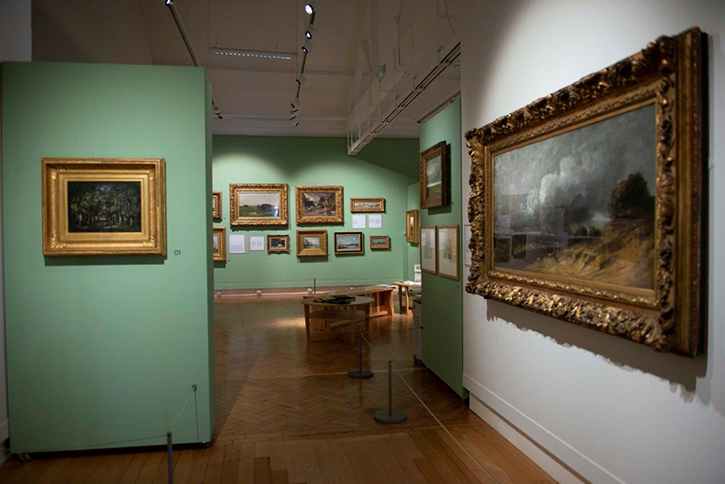
Light and Soul: Early Impressions of the French Landscape is on display at The Cooper Gallery until 7th October 2023 and you can also explore all the work from the exhibition in the Art UK Curation. The links in the Curation take you to audio descriptions that have been made with help from VocalEyes. There is also a link at the end to a 360-degree interactive tour that includes videos, blogs and other content.
Natalie Murray, Collections and Exhibitions Manager at Barnsley Museums
